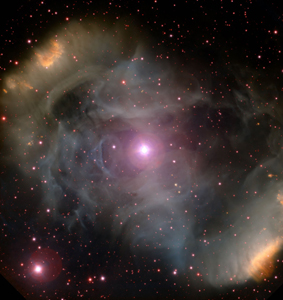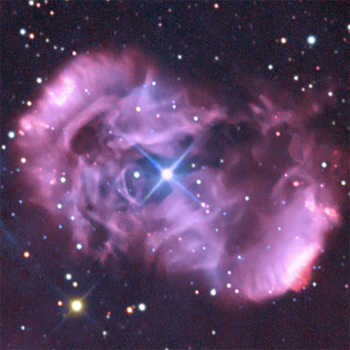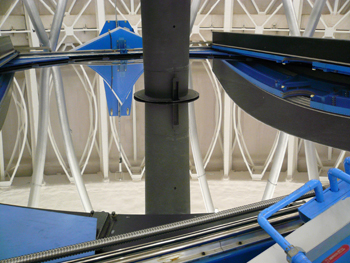NGC 6164 is a bipolar nebula in the southern constellation of Norma. It is about 4 light years across and close to Earth at 4,200 light years. The bright central O-type star (HD 148937) is nearing the end of its life and will likely become a supernova. It is 40 times the size of our Sun. North is to the left. The bright bar at the southern end is NGC 6165, so the object is commonly referred to as NGC 6164-5 or 6164/6165.It is not a planetary nebula because the central star is an extreme O-type, mass-loss star, similar to a Wolf-Rayet star.
The narrowband filters help to bring out the extended outer OIII-rich halo that represents an earlier expulsive phase. This is one of few images showing the extent of this halo, that is embedded in the surrounding nebulosity. It is not uniform likely because the interstellar medium that it is expanding into is not uniform.
Such halos are present around other objects, such as planetary nebula, including the Ring Nebula (M57) or the Dumbbell Nebula (M27). The extended halo around NGC 6164 is ~21 x 13′. The main bipolar structure is ~ 6 x 2.5′. Cometary knots are suggested in north end of the bipolar region that are well-defined in the Gemini South image (see below).
Gemini South image and background information (rotated to match above):
http://www2.gemini.edu/index.php?option=content&task=view&id=188


Gemini South
14.5″ Classical Cassegrain
I had a unique opportunity to visit Gemini South in Chile in late 2006. It is interesting to put aperture into perspective. In comparison to our 14.5″ primary mirror in S. Australia, here is a picture that I took of the Gemini South primary mirror after the engineer kindly opened the cover for us.


